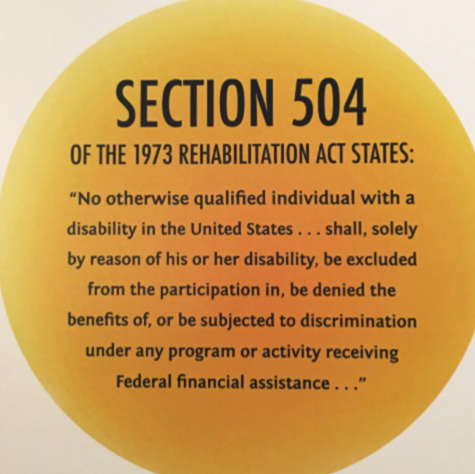Navigating School with a 504 Plan and IEP: One Student's Story
- thomasrepass
- Feb 28
- 3 min read

Navigating high school can be challenging for any student, but for those who rely on 504 plans and Individualized Education Programs (IEPs), it comes with its own set of unique obstacles. For Maya, a student at Blacksburg High School, these programs have been vital in helping them safely complete their education while managing disabilities and health concerns. However, while the support has been crucial, their experience has highlighted both the strengths and shortcomings of these systems.
-Starting Out: The Basics of a 504 Plan and IEP-
Maya first began receiving accommodations in their sophomore year when they were placed under a 504 plan. As they explain, “A 504 plan is defined as a written document that outlines accommodations and services for students with disabilities to participate in school programs. These include things like extra time on tests, leaving 5 minutes before the bell, having notes provided by your instructor, and things similar.”
However, it soon became clear that these basic accommodations weren't enough. Maya’s conditions required a more specialized approach, and they were eventually shifted to an IEP. According to Maya, “An IEP is more hyper specific to disabilities or ailments that are prelisted. They're more focused on accommodations that can be seen as more drastic… It can also affect your school curriculum layout and how you receive instruction to begin with.”
Maya shared that the transition from a 504 to an IEP was necessary due to their health challenges. “I've been firmly under an IEP for about a year now, but could be wrong with the time frame seeing as meetings were held in the summer,” they mentioned.
-Struggles with Communication and Support-
While the accommodations Maya received have been critical to their academic success, navigating the system wasn’t always, and still isn't, easy. One of the biggest issues they encountered was the lack of communication between the special education department and standard classroom teachers. “When I had a 504, I had to constantly be reminding my teachers of what my accommodations were, constantly advocate for myself, and even have a copy on hand,” they shared. Some teachers weren’t even informed about their 504 plan until weeks into the school year, leading to unnecessary hurdles and difficulties.
Additionally, Maya had a particularly difficult experience during their freshman year while their 504 plan was fully implemented. "I had one instance when a teacher recorded me in the cafeteria 3 times over the course of 3 mornings, and their justification was that I was disrespecting staff and breaking school rules for cussing and making rude gestures. I had a Tourette’s diagnosis and 504 at the time." Situations like these and many others, where medical conditions aren't properly understood, easily show gaps in the system that leave students vulnerable.
Another instance occurred in a freshman P.E. class when a teacher disregarded Maya's mobility issues. "The teacher ignored my lack of mobility and made me do penalty work on the gymnasium floor because I couldn't get up. I've dragged myself to the nurse due to them not legally being able to spare wheelchairs," they recalled.
-Where the System Succeeds - and Where It Fails-
Despite the struggles, Maya is quick to acknowledge the positive aspects of their experience, especially the support from the special education department. “The support system and people working with me at BHS are lovely and have helped immensely. My education likely would have ended up with me dropping out if I didn’t receive accommodation.”
Maya seems to believe the real issue lies not with the programs themselves, but with how they are integrated into the broader school system. They pointed out that teachers outside the special education department often lacked the training or awareness to effectively accommodate students like them. “There’s no education or awareness surrounding it, and that’s why it was such a struggle figuring out how to get what I have now.”
-Looking Forward: Improving the System-
When asked about what changes could improve the experience of students in similar situations, Maya emphasized the need for more education and better communication across the board. “I would mandate education on commonly seen conditions, how to handle them in case of emergency, and placing an organization system in place for actually distributing the students’ plans.”
Maya emphasized that the biggest issue with the system is the lack of communication and understanding among staff outside the special education department. “There's little to no communication with the actual teachers and staff outside of the special education department,” they said. They noted that, while their case manager and the special education team have been incredibly supportive, it’s the broader school system that needs improvement. Maya believes that better teacher education on disabilities, emergency procedures, and clearer communication about students' accommodations would make a huge difference.
“Just because a student is different or receives accommodated services doesn't mean they are having it easy.”
Written by Asher Mercier



Commentaires